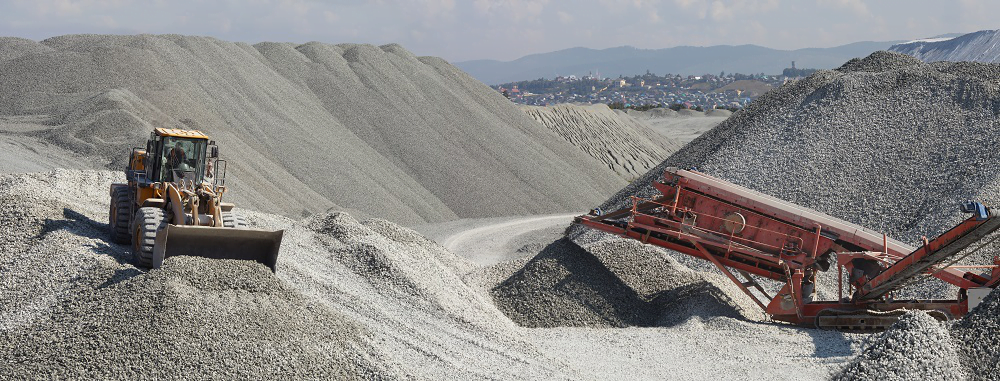
From roads to skyscrapers, aggregates are the base for most construction projects – but what exactly do aggregates consist of? Where do they come from? How do they get from the Earth to a construction site? Here, the experts at ReAgg explain what the different kinds of aggregates are, how they are produced, and how our big green trucks are able to deliver them to your construction site.
Importance of Aggregates
While they may seem like nothing more than rocks, aggregates are crucial to the construction industry and include sand, gravel, crushed stone, slag, large quarry stone and more. They occur naturally in the Earth and are included in the “most mined materials” throughout the world.
Aggregates are chosen as the base material for the infrastructure of projects because their uniform properties allow for a strong foundation. They provide the bedrock for roads, bridges, buildings and tunnels and are a key component in the production of both asphalt and concrete. In short, the world as we know it would not exist without aggregates.
Aggregate Mining
Aggregates require an extensive mining process to remove them from the ground. First, a mining site must be evaluated and permits obtained before mining can begin. There are different methods of mining for aggregates, but the most common is appropriately named quarrying. A quarry is a large, open-pit that allows for rock, sand, and minerals to be extracted from the Earth through the process of drilling and blasting. Once mined, aggregates are transported from the quarry to a processing facility where they are transformed into the final product.
Aggregate Processing
At the processing plant, quarried rock undergoes primary and secondary crushing to create the desired end product. The actual method used for processing is based on the type of rock, product requirements and end use. Some aggregates will be crushed to a powder, while others are screened to various diameters.
Upon arrival, aggregates are fed through a crusher. Most sites operate a primary crusher, which is able to reduce the size of the quarried rock down to a six-inch caliber. These larger rocks are then crushed a second time, screened and, in some cases, blended to create usable aggregates. Sometimes, an aggregate will go through three different crushers before the desired product is obtained.
Processing facilities must also adhere to rigorous quality control standards when refining aggregate products. If a specific aggregate is not the correct size, for example, the end product could ultimately fail. To make sure this never happens, plants are required to meet specific state and federal guidelines.
Transportation of Aggregates to Job Sites
Once the aggregates are given the green light from quality control, they are transported to the job. Most quarries and processing plants utilize dump trucks to haul their materials. However, when necessary, aggregates can be transported by rail or water.
How ReAgg is Making a Difference in the Aggregate Supply Industry
ReAgg is more than just stone. We offer competitive advantages that allow our customers to complete a variety of projects on time and at a competitive price. With no natural quarries in the immediate Washington Metropolitan area, our large inventory of aggregate materials provides a convenient and accessible source for the local construction market. When purchasing products directly from ReAgg, our customers don’t have to worry about availability, logistics or time lost, three factors that affect their bottom line.
Contact ReAgg for Your Aggregate Needs
ReAgg has been proudly supplying aggregate products throughout Maryland, Northern Virginia, Washington D.C., and Baltimore for decades. We understand the important role aggregate materials play in the construction industry. Whether your project is large or small, ReAgg is here to serve you. From processing to delivery, we will be with you every step of the way. Call 301-336-6700 or visit our website today for a quote.








